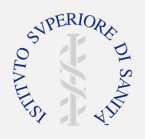Il rischio di contrarre la dengue varia a seconda della:14
- durata della permanenza;
- stagione in cui si compie il viaggio;
- attività epidemica del Paese di destinazione.
Qualunque consiglio prima del viaggio a proposito dei rischi di contrarre l’infezione da dengue dovrebbe tenere in considerazione questi fattori.14






